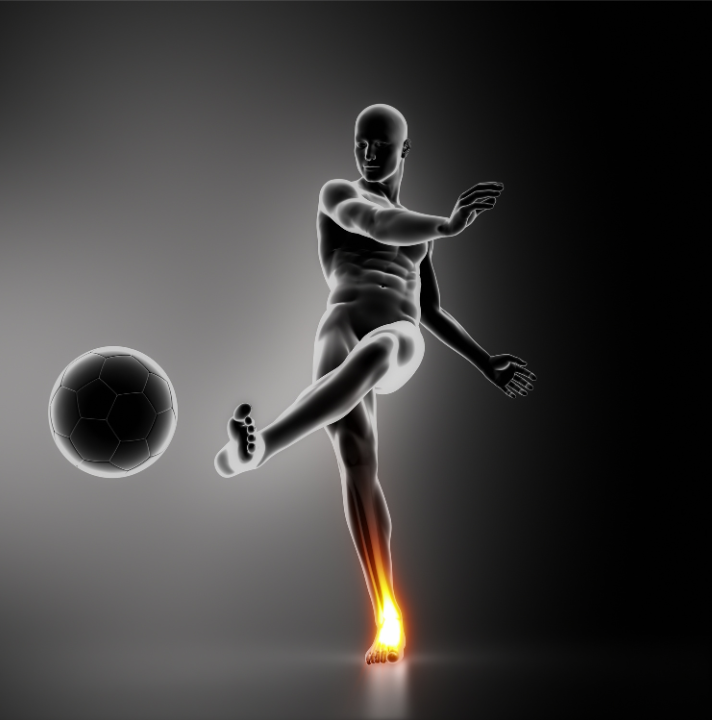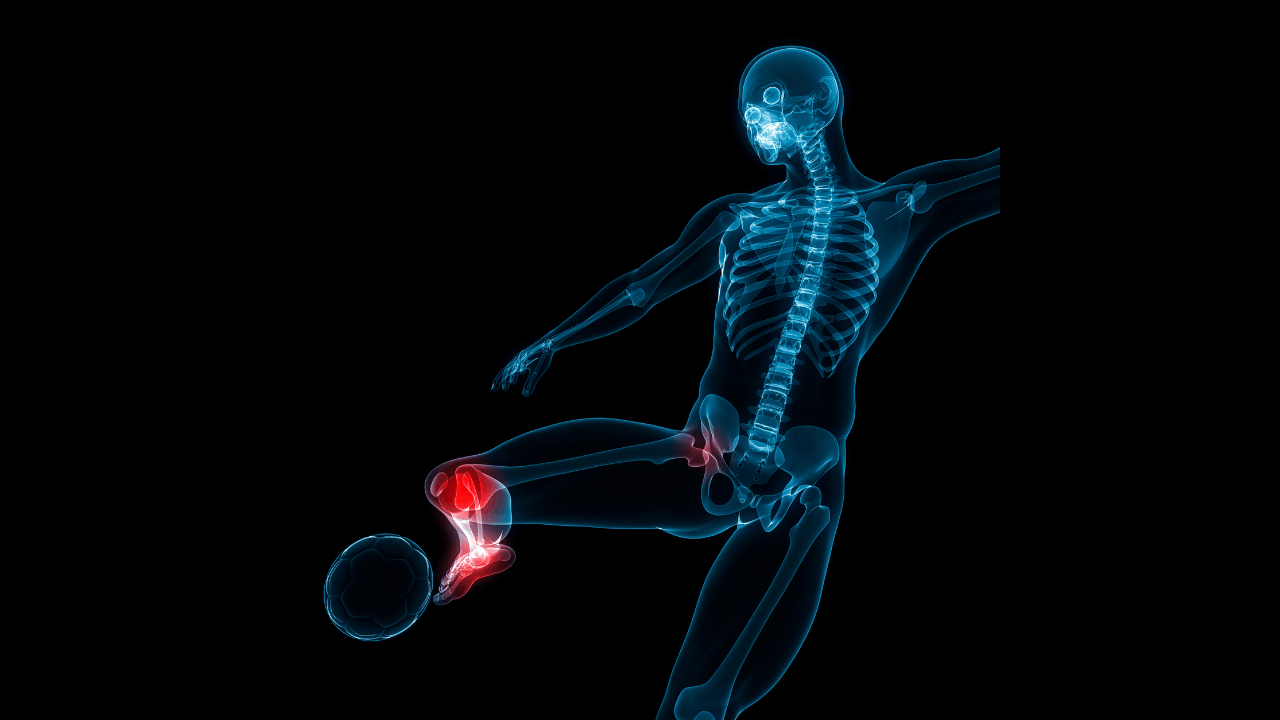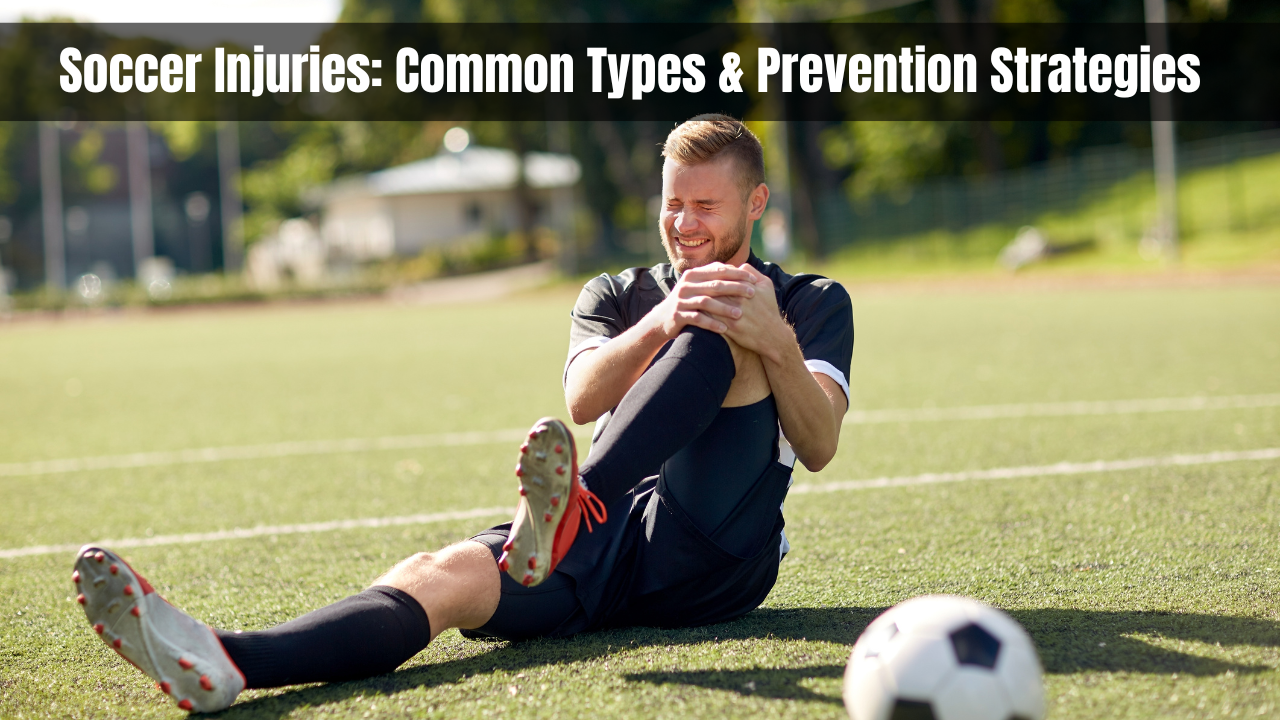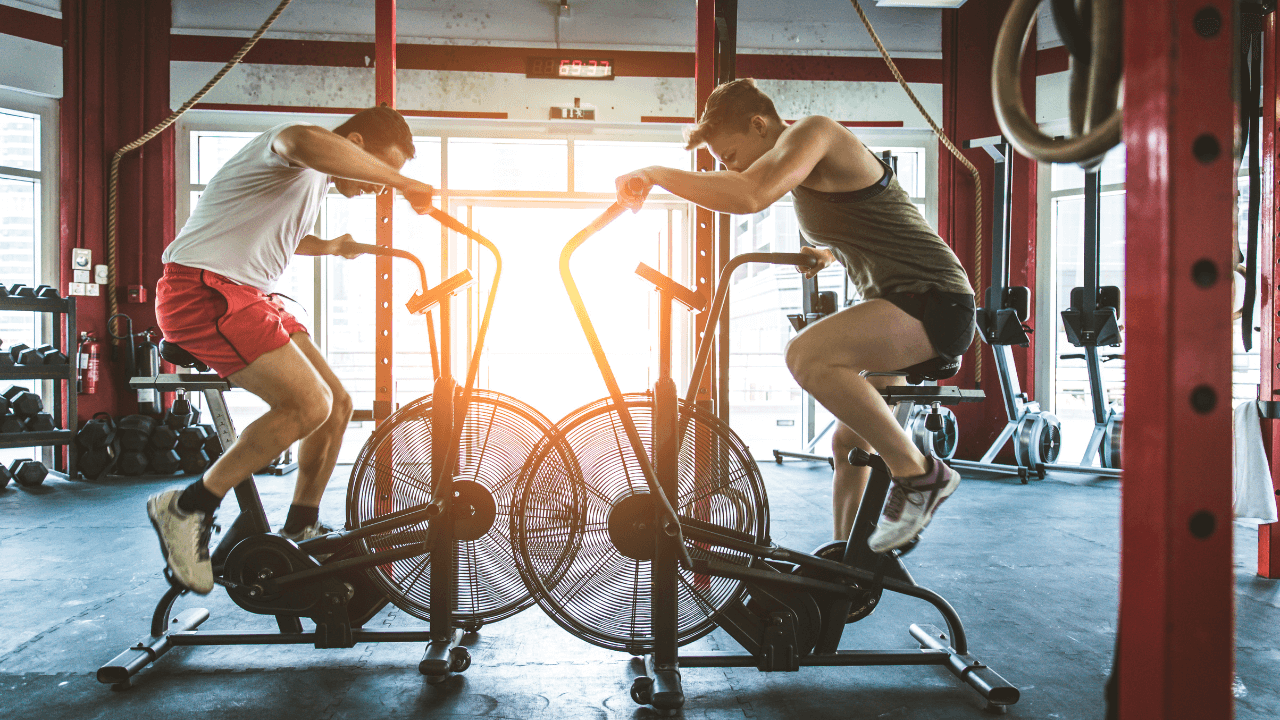Soccer is one of the most popular sports in the world, and millions of all ages, genders, and backgrounds play every day. Unfortunately, soccer injuries are common and can be severe. Players need to understand the risks and take preventative measures.
This blog outlines some of the most common injuries and preventative measures. By equipping themselves with prevention strategies, players can spot potential dangers before they become an issue and take the necessary steps to avoid them, reducing the risk of being sidelined.
Types of Soccer Injuries

A. Acute Soccer Injuries
Accidents resulting in this kind of injury occur suddenly, usually after forceful contact between two objects or because of the sheer force generated by one of them.
1. Anterior Cruciate Ligament (ACL) Injury
The ACL is a ligament that runs through the middle of your knee joint and provides stability when playing soccer or other sports requiring sudden stops or changes in direction. An ACL injury is one of the most common injuries, and it can be distressing and slow to heal.
2. Stress Fractures
Stress fractures are small cracks in the bones that often occur when players overuse their lower body muscles and joints during practice or a game. They usually affect the shin bone, although it can also involve other leg parts if players do not take adequate rest breaks after vigorous activity.
3. Shin Splints
Shin splints start after overstretching or stressing the muscles in your lower legs, which occurs when players unexpectedly change direction quickly or accelerate rapidly during play.
Symptoms include:
- Pain along the sides of your shin bone
- Tightness in your calf muscles
4. Ankle Sprains
Ankle sprains occur when soccer players twist their ankles while running or changing direction quickly during a game. The ligaments that hold the ankle joint together are stretched beyond their normal range of motion, resulting in:
- Pain
- Swelling
- Bruising at the site of the sprain
5. Hamstring Strains
Hamstring strains are common soccer injuries when players over-stretch or strain their hamstring muscles during play.
Symptoms include:
- Pain in the back of your thigh
- Reduced ability to move your leg
- Tenderness at the site of the strain
6. Adductor Strains
Adductor strains are injuries that occur when soccer players quickly change direction or accelerate while running. The muscles in the groin area are stretched beyond their normal range of motion, resulting in:
- Pain
- Swelling in the adductor muscles
B. Chronic Injuries
These injuries develop over time due to repetitive stress, poor conditioning, or overuse. The cause of this type of soccer injury is usually related to continuous motion or repetitive activities.
1. Cumulative Injuries
Cumulative injuries occur over time from repetitive stress, such as extended periods of soccer practice or playing without adequate rest breaks in between games. These injuries typically affect the joints, tendons, and muscles throughout your lower body, including your knees, ankles, hips, and feet.
2. Repetitive Stress Injuries
These injuries involve repeatedly performing the same type of motion, such as kicking or sprinting for extended periods. They can affect your lower body muscles, tendons, and ligaments. They also affect the upper body muscles used for throwing and gripping a ball.
3. Poor Conditioning and Physical Impairment
We should consider the impact of poor conditioning in soccer injury prevention because it increases the chance of future problems. Players should ensure proper stretch and warm-up before practices and games to reduce injuries.
Additionally, Players with physical impairments such as weak muscles or poor posture should take extra precautions to prevent severe bodily damage.
4. Plantar Fasciitis
Plantar fasciitis is a common soccer-related injury due to overuse of the muscles and joints in the foot. Being aware of these signs and symptoms can help prevent serious illness.
Symptoms of plantar fasciitis include:
- Heel pain
- Tenderness
- Stiffness along the bottom of the foot near the heel
- Swelling at the site of injury.
5. Iliotibial Band Syndrome
Iliotibial band syndrome (ITBS) is a soccer-related injury that typically affects players with poor flexibility or weak muscles in their hips, thighs, and calves.
Symptoms of ITBS include:
- Intense pain along the outside of your thigh
- Stiffness in your hip joint
- Weakness when trying to move around.
6. Achilles Tendonitis
Achilles tendonitis is a soccer-related injury caused by overuse of the Achilles tendon, which connects your calf muscles to your heel bone. Players who do not condition their muscles and keep them adequately flexible are particularly at risk of developing Achilles tendonitis.
Symptoms of Achilles Tendinitis include:
- Pain
- Swelling
- Stiffness in the back of your leg near your heel.
7. Knee Injuries
A knee injury can be caused by a direct blow to the knee, overuse of the knee joint, or improper technique when landing from a jump.
Symptoms of soccer-related knee pain include:
- Swelling
- Tenderness
- Locking or catching sensations in your knee
- Difficulty straightening your leg
8. Shoulder Impingement Syndrome
Shoulder impingement syndrome (SIS) is a soccer-related injury that occurs due to overuse of the shoulder joint. Soccer players who do not condition their upper body muscles and maintain adequate flexibility are particularly at risk of developing SIS.
Symptoms of soccer-related shoulder pain include:
- Pain when lifting your arm
- Weakness in the affected arm
- Decrease range of motion
Preventing Soccer Injuries

1. Wear Protective Gear
Wearing gear, such as shin guards or an ankle brace, can help minimize the impact after contact with other players or accidental falls during a soccer match. Wearing protective gear will also provide support when you make sudden movements during a game.
Ensure to fit your shin guards, cleats, and soccer socks to provide maximum protection while allowing you to move freely on the field.
2. Strength Training Exercises
Regular strength training exercises can help build the muscles, bones, joints, and ligaments and reduce injuries. Focus on strengthening your calf, thigh, and hip muscles to improve your overall soccer performance. It will also reduce the strain put on your joints during a game.
3. Speed Recovery Time
Taking breaks after a soccer match or practice session is essential to allow your body time to rest and recover. Take proper care of injuries through icing, compressing, and elevating the affected area to reduce swelling and pain. Apply recovery strategies to speed up damage repair. You can also speak with a physician or physical therapist if the injury persists for more than a few days.
4. Minimize Head Contact
Concussions are a common soccer-related injury due to head contact with other players or the ball. To minimize soccer-related concussions, be extra careful when many players are trying to reach the ball with their heads. Additionally, do not attempt to head the ball repeatedly, as this increases the risk of head injuries.
5. Properly Condition Your Body
Proper conditioning of your body is essential for players. Adequately warming up your muscles before a soccer match or practice session and stretching after can help reduce injuries. Players should also ensure a healthy diet to provide their bodies with the nutrients and vitamins they need to stay strong and prevent injuries.
6. Education on Risk Factors
Finally, soccer players should be aware of the risk factors for soccer-related injuries and take steps to minimize their chances of injury. It includes avoiding overuse or cumulative injuries caused on your body and being aware of acute injuries such as shin splints or stress fractures. These can occur from playing without proper support or protection.
By taking these preventive measures, they will reduce their soccer-related injury rate while still enjoying the sport they love! So wear protective gear, condition your body, and educate yourself on common soccer injuries so you can get out there and play safely!
You might be interested in: Private: Body Parts Exercises
Conclusion
You can prevent injuries with the proper gear, exercises for strength, gears, and education on risk factors. Condition your body and educate yourself to ensure that you stay safe while enjoying the sport of soccer.
Reference:
- https://www.urmc.rochester.edu/orthopaedics/sports-medicine/soccer-injuries.cfm
- https://www.verywellfit.com/common-soccer-injuries-3120651
- https://orthoinfo.aaos.org/en/staying-healthy/soccer-injury-prevention
- https://healthcare.utah.edu/healthfeed/postings/2022/09/common-soccer-injuries.php
- https://mastersoccermind.com/how-dangerous-is-soccer-with-real-stats-and-comparisons/






